Around the Bars is off this week — instead, we have this dispatch from Fred Siggins, from the second print issue of Boothby magazine. The winter issue of Boothby is about to land; to get your copy, and the next three issues, sign up here.
The banks of the expansive Tagus river are abuzz with activity as we sit on huge, ancient slabs of stone at the waterfront, swaying to a DJ playing rhythmic Iberian beats, and sipping Mojitos in giant plastic cups from the nearby pop-up bar. Looking back at the city rising up the hillside from the river, its winding cobbled streets and jumbled buildings ornamented like baroque wedding cakes, the setting sun emblazons everything with golden light. It’s easy to see why people love this town.
Lisbon, Portugal has received a lot of attention in recent years as a stunning and relatively inexpensive European travel destination. Great weather, amazing architecture, buzzing nightlife and delicious food are some of the key draws, but for those of us inclined to imbibe, the drinking in Portugal’s capital is just as good a reason to visit.
During our paltry few days in Lisbon, my partner and I had excellent local craft beer, impressive new-wave Portuguese wines, world-class craft cocktails and traditional spirits — each experience its own unique part of Lisbon’s drinking culture. It’s a city I could get lost in — and drunk in — a million times over without getting bored.
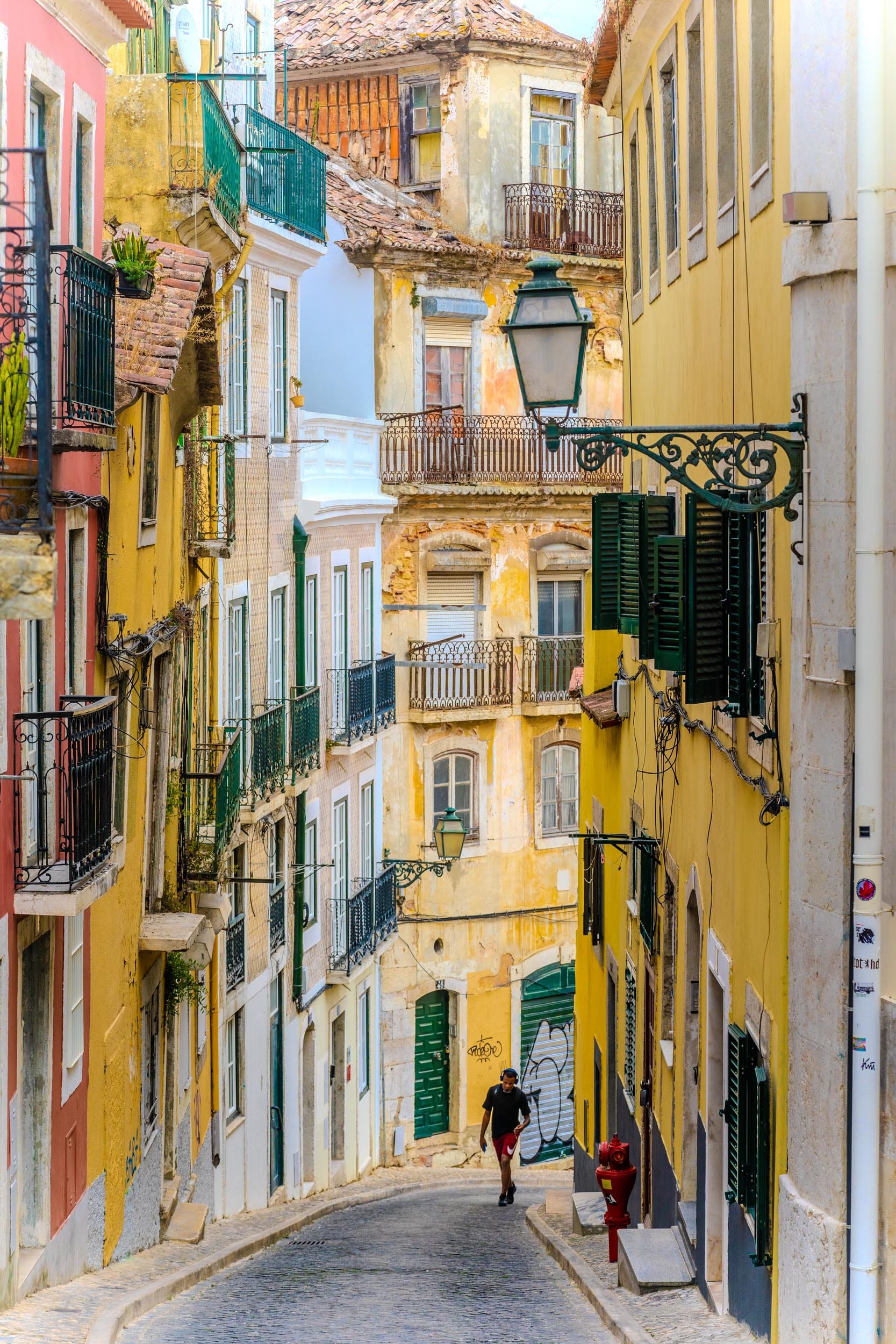
On our first day, exploring the narrow streets that seemed to branch and veer randomly near our gorgeous hotel, we came across a tiny craft beer bar, one of the many places to grab a cerveja artesanal dotted around Lisbon. Thirsty from the midsummer sun and curious about the local brews, we stopped for a fortifying glass of the frothy.
This place would be very much at home in Fitzroy or Surry Hills, its tattooed, pierced and black tee-clad staff a Portuguese (read: better looking, more tanned) version of the staff at any hipster beer bar in Melbourne. “What’s Local?” I asked. “Everything,” was the reply. It was an impressive list of every style from IPAs to sours to red ales and stouts, all made in Portugal, and most hailing from the excellent Lisbon craft brewery Musa. The tables outside were filled with cool young locals, also sporting plenty of ink and smoking hand-rolled cigarettes. It was the perfect place to do some people watching and wet our whistle with a delicious saison.
Wandering the streets of Lisbon, we discovered a fun bit of local drinking culture in the form of ginja; a cherry liqueur made at the height of the cherry season and enjoyed throughout summer at tiny bolt-hole shops that sell this blood-red elixir exclusively, either by the bottle or by the shot. These are not bars — there are no seats — you simply pay your couple of euros, do your shot of delicious sweet-tart cherry liqueur in the street, and mosey on, like an espresso bar for boozehounds. We brought some mini bottles home, and playing around discovered that ginja makes a fantastic cherry version of a Clover Club.
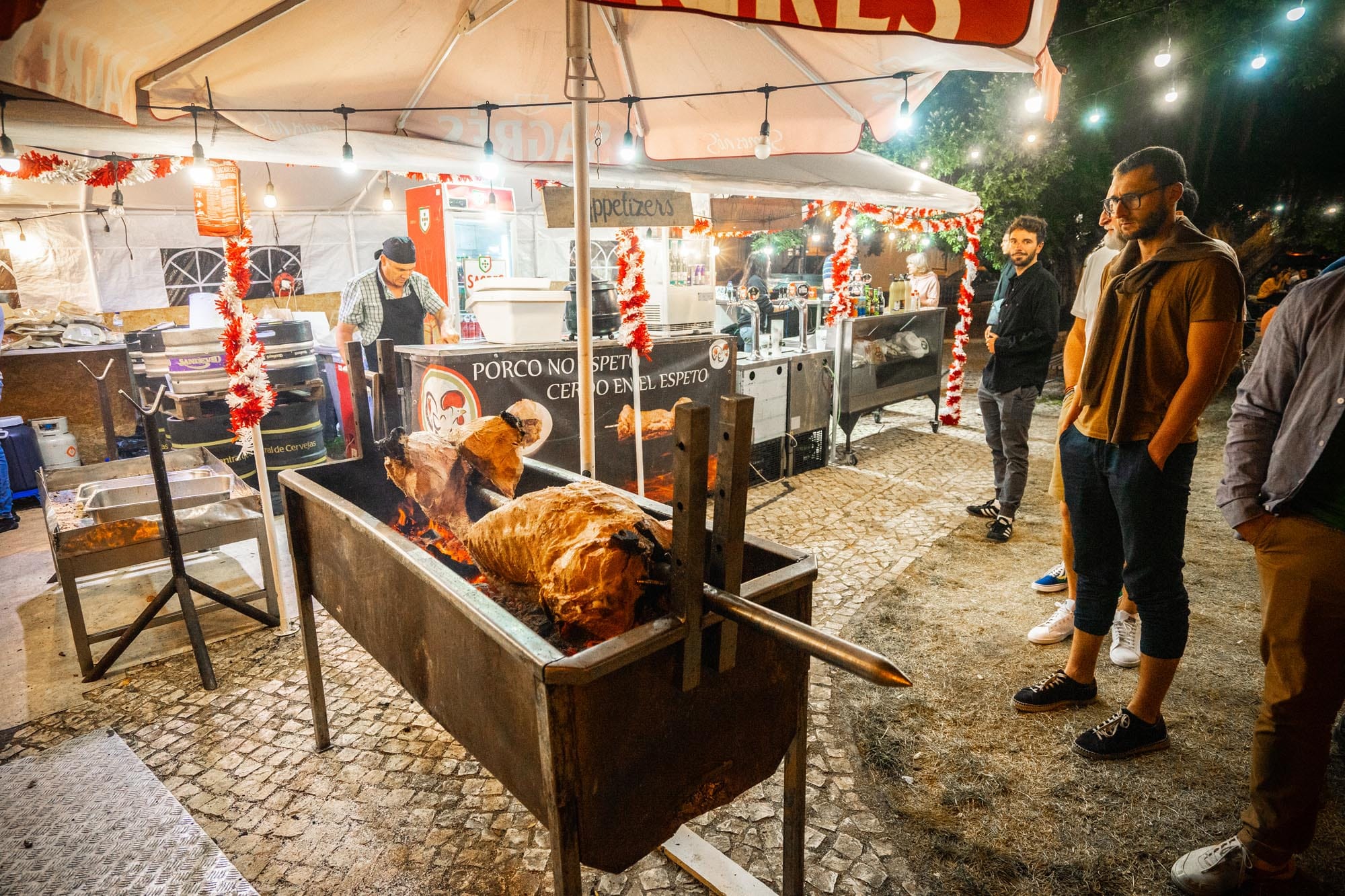
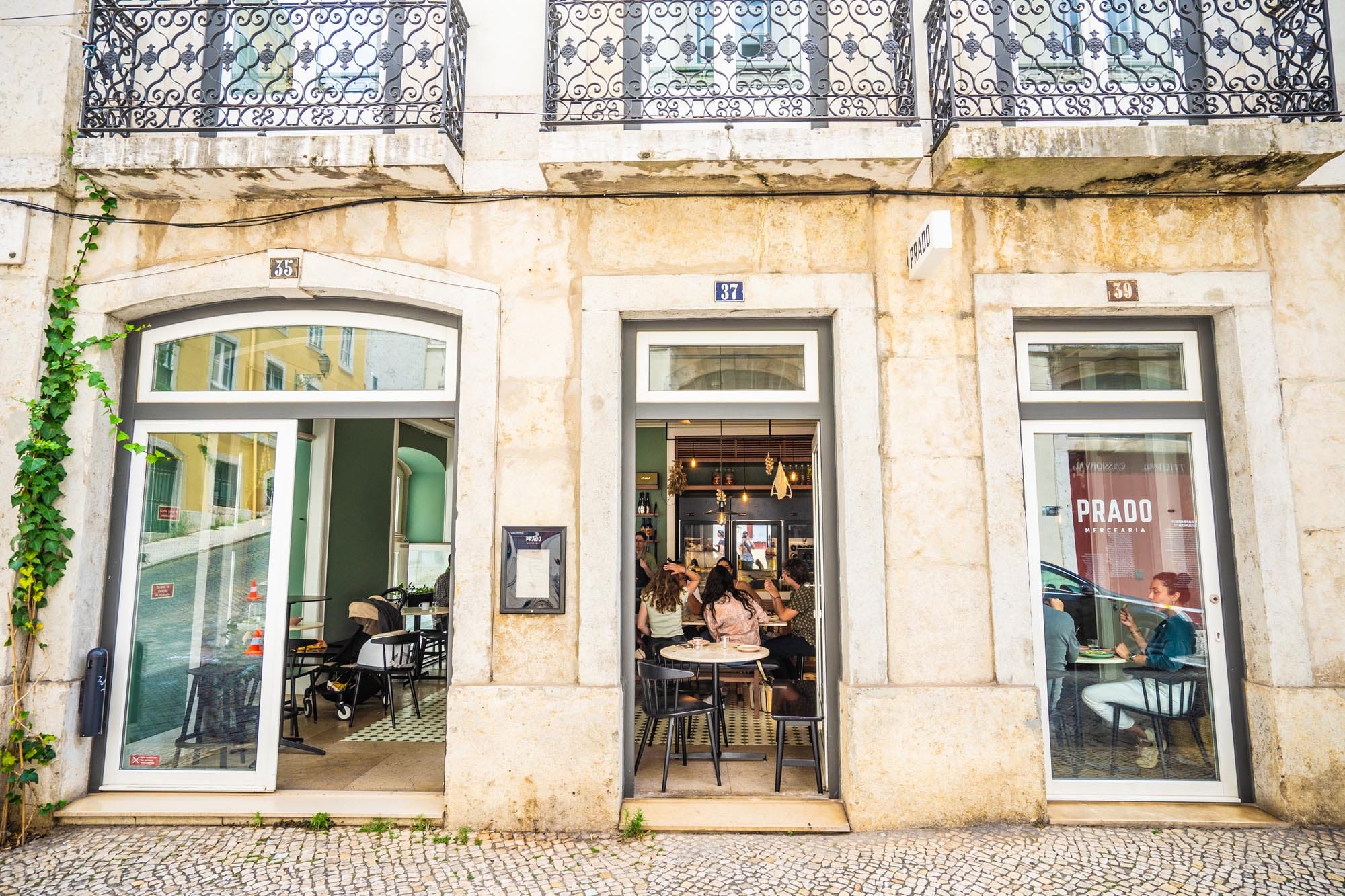
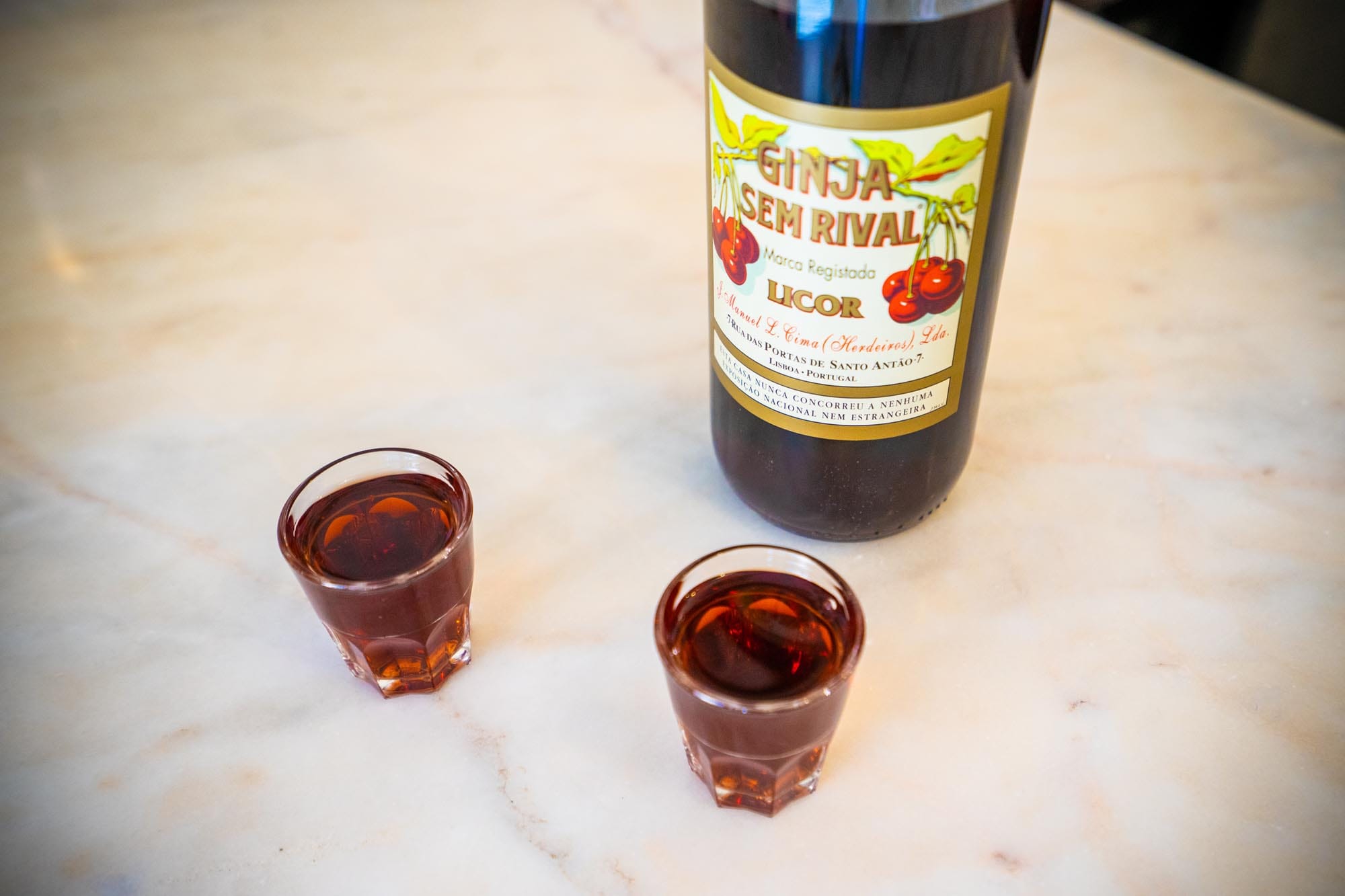
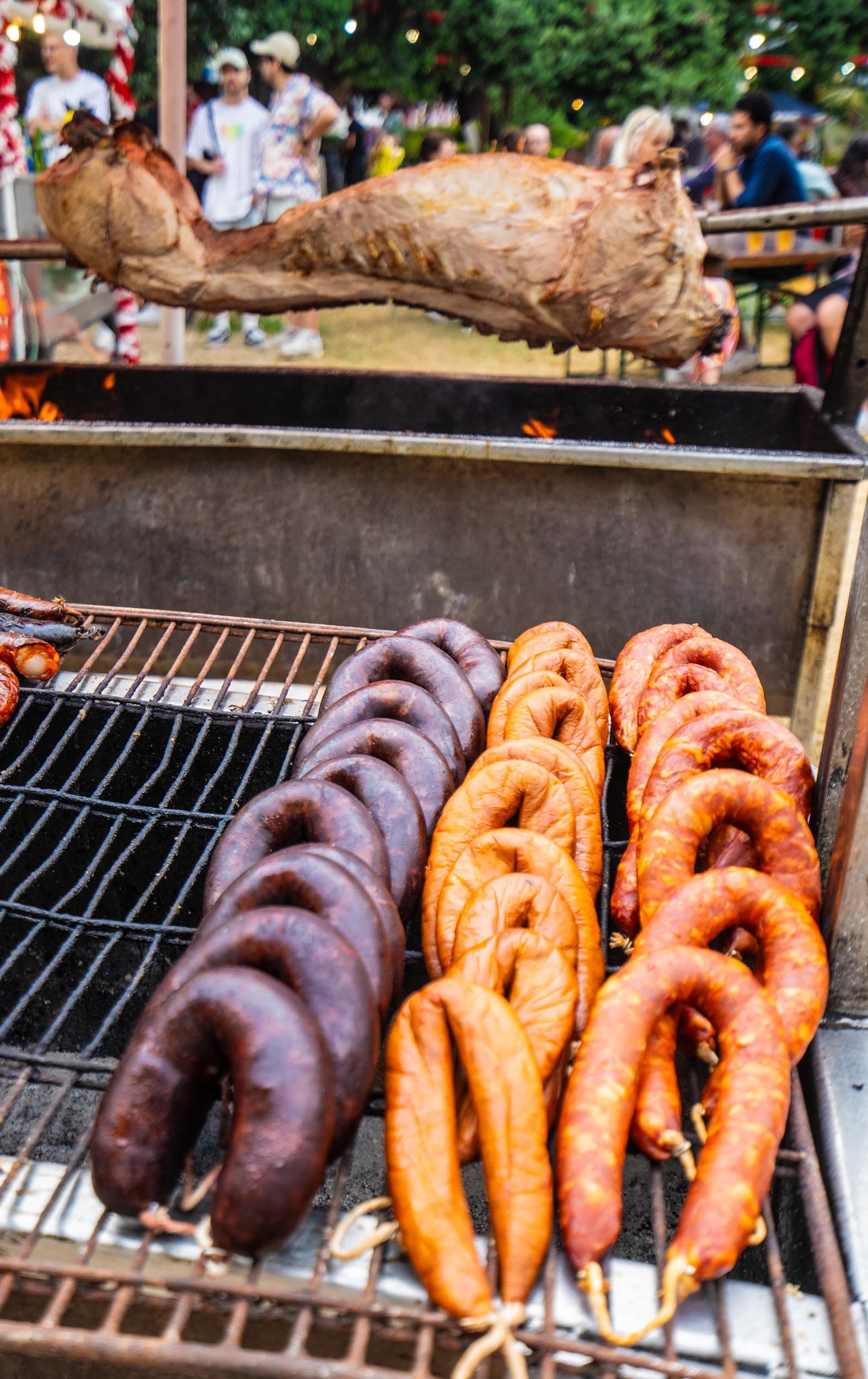
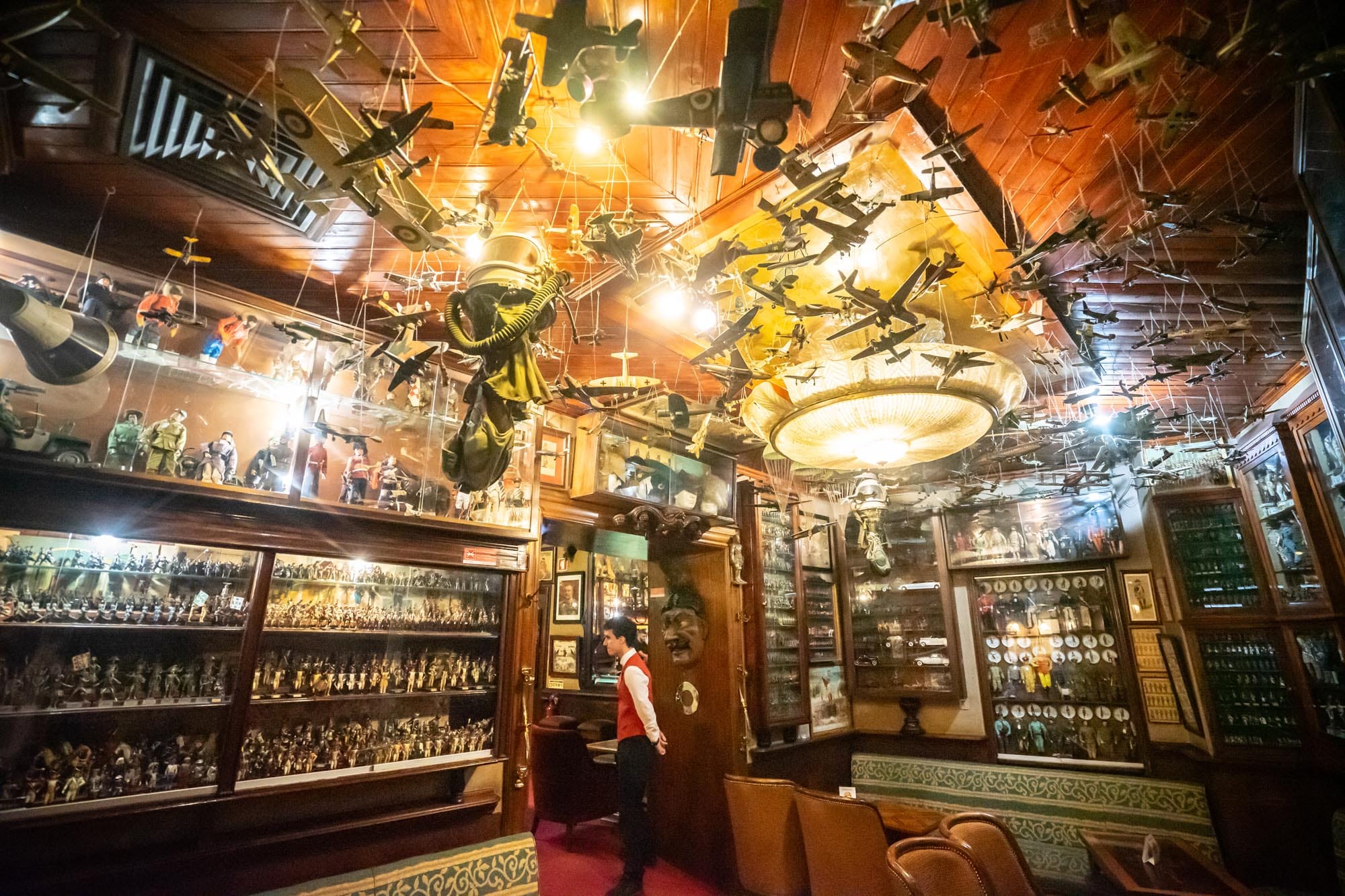
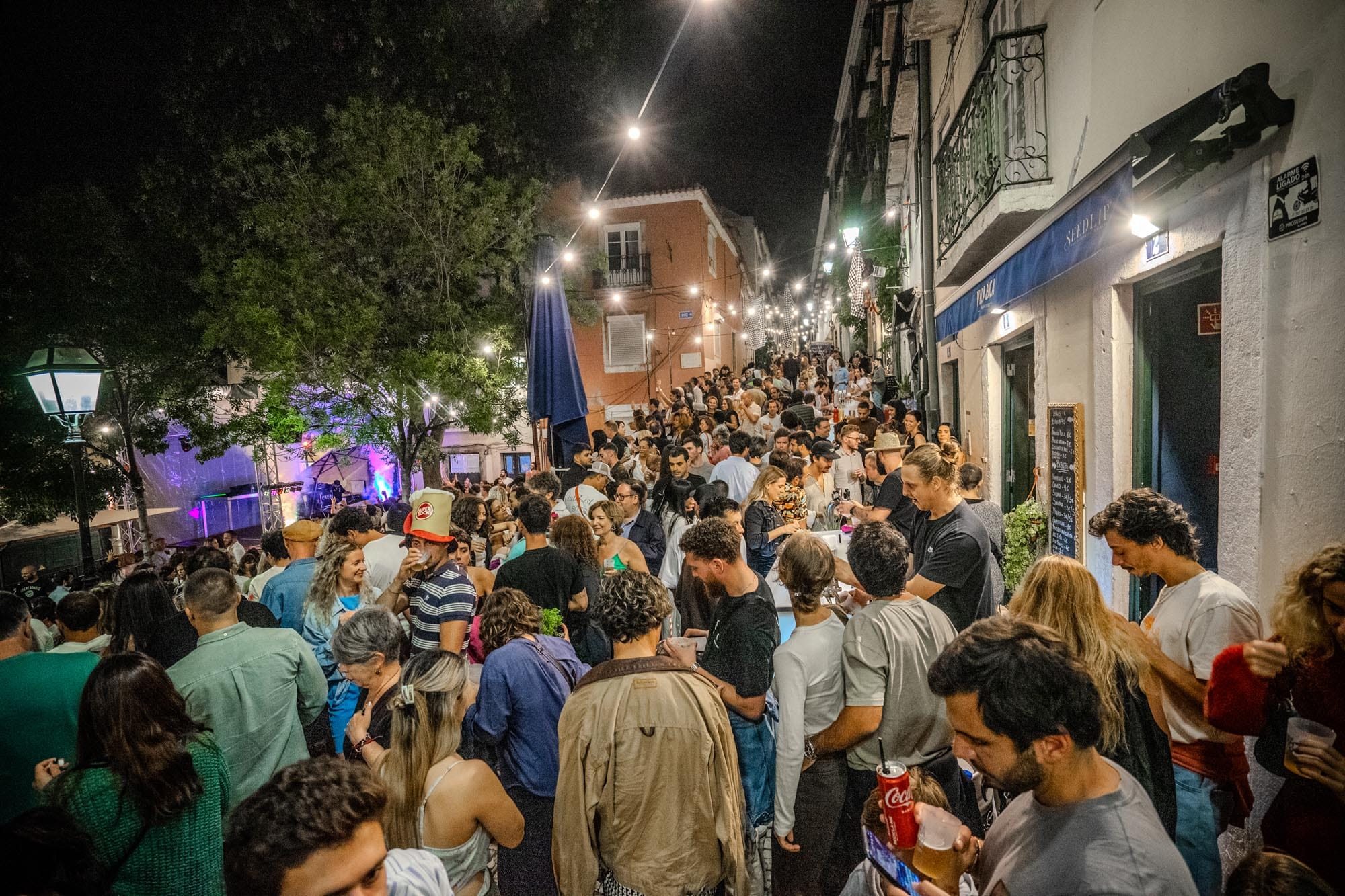
Photos: Fred Siggins
Our next stop was a gorgeous little bistro called Prado Mercearia, again something that reminded me of the best wine bars in Melbourne. This was not the sort of ancient hole-in-the-wall I’d experienced in Spain or Paris but bright and modern, with new wave wines and outstanding snacks like tuna tartare topped with pickled strawberry spiked with red chillies and baby basil. A glass of Quinta de Santa Julia Branco pairs wonderfully — light and pale with notes of fresh peach, mandarin and green apple underlining a balanced acidity, ideal for the mid-afternoon heat.
After more aimless wandering, we escaped the summer sun into the strange and wonderful Pavilhão Chinês. This dimly lit bar feels like something out of a Terry Gilliam movie — every inch covered with the most random collection of stuff. In the main room, jumbles of ornate lamps and statues are overlooked by towering glass cabinets filled with antique toys, vintage crockery, and seemingly endless bric-a-brac. A smaller room out the back is festooned with model aeroplanes hanging from the ceiling, while bemused looking waiters in ill-fitting red waistcoats stand around not looking for anything to do. It’s a hoot. We stumble through ordering a white port and tonic to cool off, and, thus fortified, venture back out into the glare of the Iberian sun.
Later that night, we tried to get into Red Frog, just minutes from our hotel and Lisbon’s most internationally lauded cocktail bar. “No way.” We were told. We would need to come early and put our name on the list, such was the demand for the small number of seats at this cocktail institution. “But feel free to go upstairs to our sister bar, Monkey Mash.” Monkey Mash is more casual, bigger and easier to get into; Red Frog does table service and strictly enforces its capacity limit.
But upstairs at Monkey Mash, we were blown away by the engaging service and outstanding cocktails. Drinks like the Dope Punch, a clarified milk punch of marigold and sichuan pepper-infused buttermilk with Japanese whisky and kumquat falernum were some of the best I’ve ever tried, and the bartender was happy to write us a list of other bars we should visit. For cocktail nerds, if there were one place in Lisbon that is a must, this is it.
We managed to get into Red Frog the next evening, and the cocktails were great, but for me the drinks, the service and the atmosphere at Monkey Mash were all much more our vibe. It almost felt as if Red Frog, being so well respected, was a little stuck in time, playing the classics people had come to know and love with rote precision, while Monkey felt more modern, more dynamic, and less beholden to its own success.
So after a couple of quiet drinks at Red Frog, we were looking for a party. And Lisbon showed up with bells on. The timing of our visit, it turned out, coincided with the Feast of Saint Anthony, a month-long festival where by night the tiny cobblestoned courtyards dotted around the city are transformed into epic street parties. Tens of thousands of people — young and old, local and tourist alike — hit the streets every night to drink copious amounts of local lager from pop-up bars, eat roast pork carved directly from the spit, and dance to live DJs and traditional fado bands as residents bop along from their wrought-iron balconies.
The rest of our trip to Portugal was filled with wonderful drinking experiences, from trying 20 year old ports in the Douro Valley to sipping vinho verde in the mountains of the north, interspersed with castles, museums, friendly locals and amazing beaches. But stumbling back to the hotel after that night of dancing in the street with strangers, my partner and I had that most cliched of tourist-in-Europe conversations.
“You know,” we said to each other, “I can really see us living in Lisbon.”
The winter issue of Boothby magazine lands at the start of June — to get your copy, and the next three issues, sign up here. Thanks for your support of Boothby!










